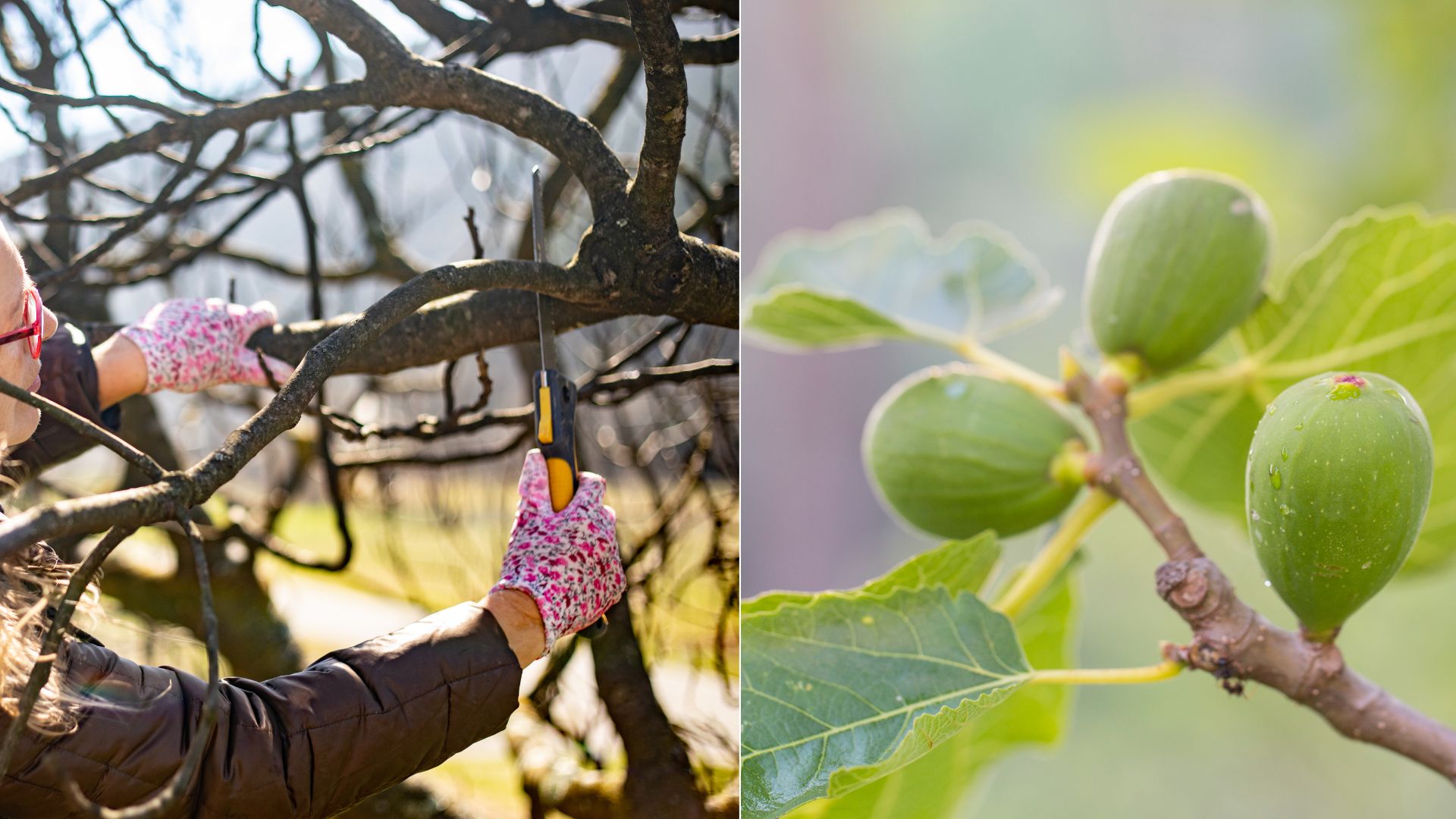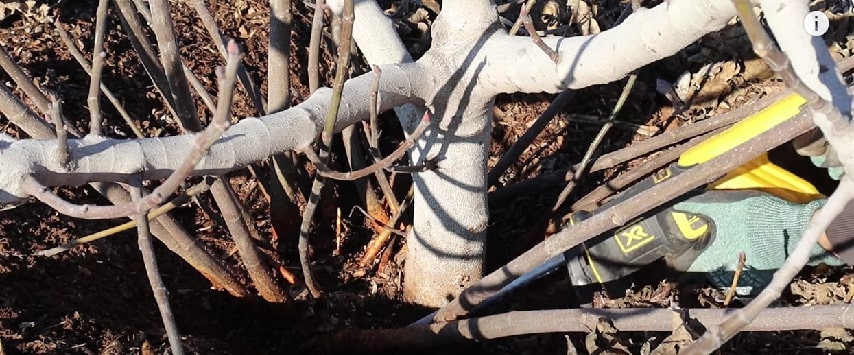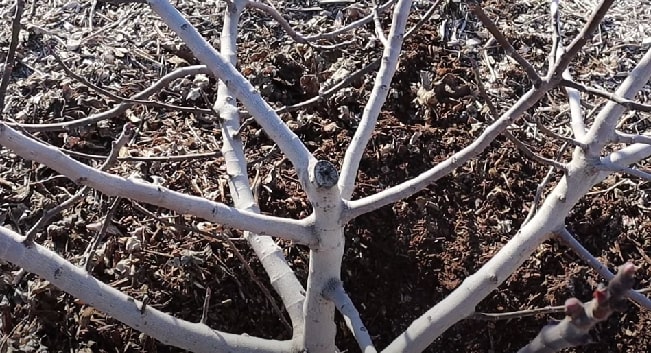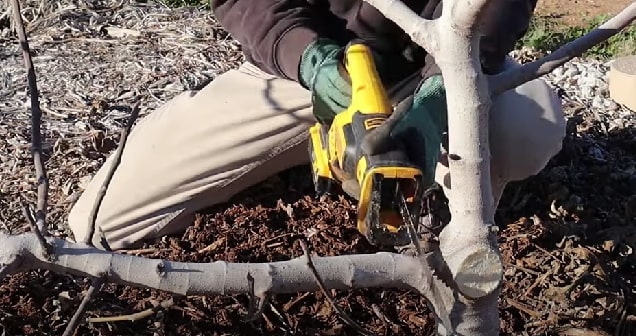Pruning is a very important part of the fig tree care guide. Learning how to properly prune your fig trees will improve the trees’ health and also maximize fruit production.
Timing is crucial when pruning figs – you can either do it at the end of winter or in the late summer. In this article, we are going to talk about winter pruning of three year old fig trees.
All you need to do is gather some tools and start pruning!
What You’ll Need
• Gloves
• Protective glasses
• Sharp pruners for smaller branches (i.e. Corona pruners)
• Pair of loppers for larger branches (i.e. Tabor lopper)
• Handsaw or reciprocating saw
Pro Tip: Make sure that your gardening tools are always sharp and clean. Don’t forget to wear protective equipment!
How To Do It
One of the biggest fig growing mistakes is inadequate pruning. Start by carefully examining your fig tree and locating the main trunk. Now, you will notice a lot of branches that are growing from the ground – get rid of those first and then get to the tree itself.
Most gardeners leave scaffolding branches in their second year of growth to get some fruits in their first year of fruit production. This year, you’ll want to raise a trunk just a little bit.
While we typically wouldn’t prune this heavy on a young tree we want for production, these trees grow aggressively, so they should also be pruned in a similar manner.
In case your tree has evenly placed scaffolding branches that are two and a half feet off the ground, you should lose the rest of the branches that are growing below them.
Always make sure you get clean cuts. This can be achieved by looking for a collar that happens where the branch itself meets the trunk – cut about a quarter inch to half an inch into the branch, leaving that nice thick collar up against the trunk.
Now, we’ve taken a lot of material off this tree so we shouldn’t be any more aggressive with it. But I should again point out that this tree grows heavily, which allows us to prune more than we normally would.
However, all trees respond differently to their environments, so perhaps your tree might be a slow-grower if you live in colder regions. So you typically wouldn’t be this aggressive if you are not seeing several feet of growth on each branch every season.
The last thing you should do when pruning is get rid of any growth that’s pointing into the center of the tree – this will encourage the tree to grow out nice and wide.
If your tree is growing quite profusely, you might want to create a harvesting notch when pruning. A harvesting notch is a space that allows us to get into the middle of the tree for harvesting.
Fig trees produce an irritating substance that gets on our skin and starts to itch; so, when we are doing our harvesting, we want to make it as easy as possible for us to get into the tree and not rub it against the leaves and branches.
Just make sure to leave an open area on the north side of the tree that will allow you to harvest quite easily.
One thing to keep in mind with figs is that most of the production is new growth off of wood that is at least a year old. So, anywhere you currently have branches is where you will pick your delicious figs in the next growing season!




